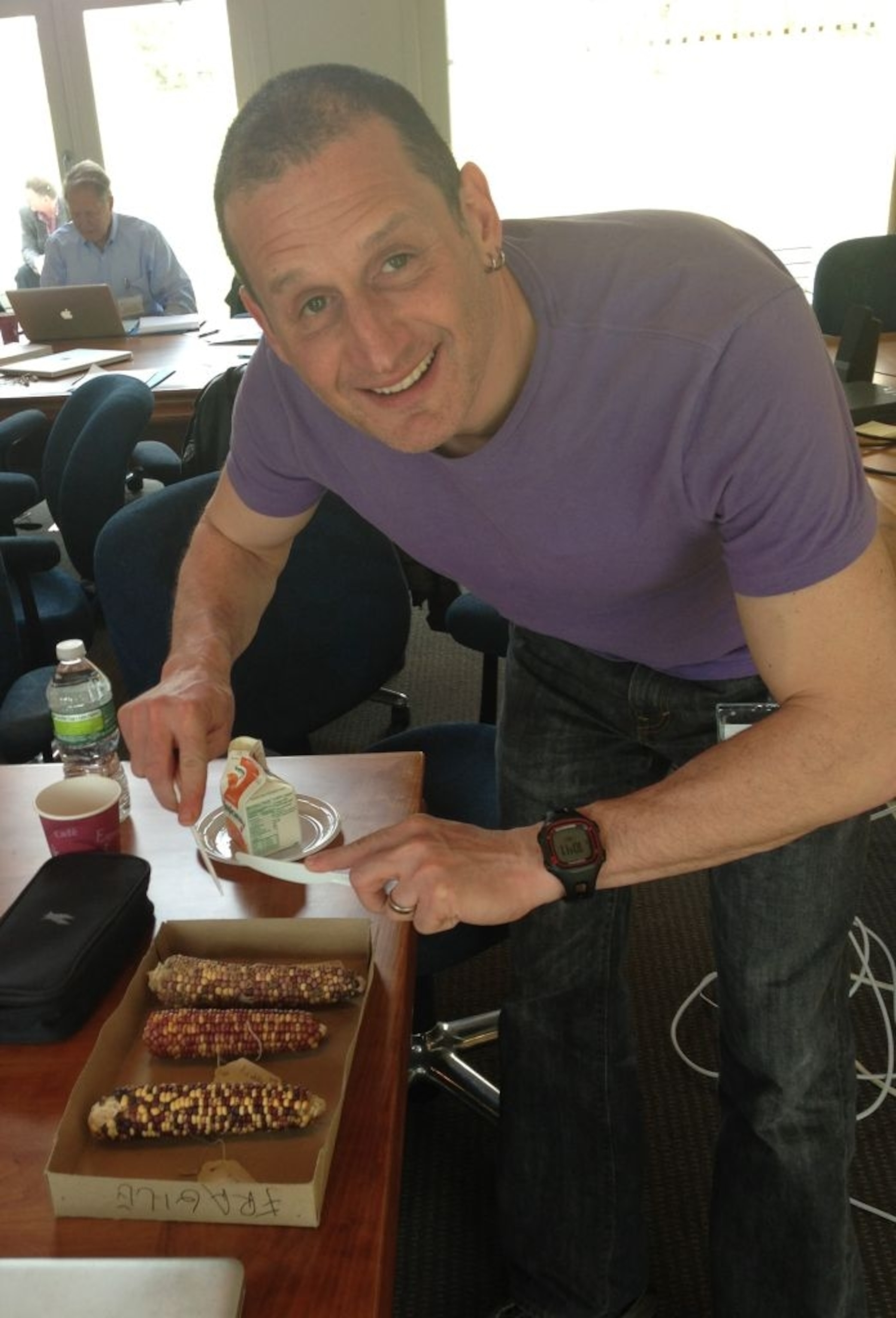
The Jumping Gene: Friend or Foe?
A cob of maize holds several hundred kernels, and each one came from its very own fertilization. So you could think of the cob, perhaps, like a large, tight-knit family, full of unique kernel personalities: some purple, some yellow, some fat, some skinny.
In the 1940s, geneticist Barbara McClintock of the Cold Spring Harbor Laboratory in New York wanted to know: Why is it that some kernels show an uneven splattering of color? If the DNA in every cell in each kernel contains the same pigment gene (or genes), then why isn’t that color expressed the same way in every cell?
As McClintock would discover (and, three decades later, win a Nobel Prize for), the color variation in maize comes from transposons, or so-called jumping genes. These stretches of DNA hop out of their original spot in the genome and then wedge themselves in another, random place. When they land, they may disrupt the activities of nearby genes, including pigment genes. The jumping patterns are different in every cell, thus explaining the color variability.
Ever since McClintock’s big discovery, two ideas have dominated the scientific literature on jumping genes, notes Josh Dubnau, a neuroscientist at Cold Spring Harbor. One is that transposons are, in a sense, friendly. For example, as I wrote about a couple of weeks ago, a recent study found that jumping genes are more active in some types of neurons than others, suggesting that the brain has evolved ways of using these elements for its own (normal, healthy) specialization.
The other idea is that, while transposons may be useful in certain circumstances, they’re usually parasites. Studies have shown that when transposons jump in stem cells that become sperm or egg cells, for example, “they can destroy the germline. You can get animals that are completely sterile simply because a transposon has gone rogue,” Dubnau says. “This is the dark side of transposons.”
Dubnau has provided another example of transposon terror in a study published earlier this month in Nature Neuroscience. His team found that in normal fruit fly brains, jumping genes accumulate and become more active with age. What’s more, mutant flies with too many transposons show long-term memory problems and die earlier than normal flies.
McClintock’s maize studies concerned jumping genes that get cut out of the genome and pasted elsewhere. But these ‘DNA transposons’ seem to be inactive in humans, Dubnau says. His study focused instead on a type of jumping gene that is active in people. Called ‘retrotransposons’, these genes are first copied and then the copy is pasted into a new spot.
One reason to think of retrotransposons as foes is that “we have a really, really elaborate, sort of like an innate immune system against them,” Dubnau says. “We as animals put a lot of genomic effort into silencing them.”
Take, for example, our argonaute family of proteins, which can latch on to jumping genes and shut them down. Dubnau’s team genetically manipulated one of the argonautes, AGO2, so that the transposons it regulates would be, in the words of the study, “unleashed prematurely” in young flies. These young’ins show dramatic memory loss by the time they’re 20 days old, less than halfway through the 50-day life of a normal fly. The mutants die around 30 days.

The study hasn’t quite proven that transposon build-up causes these memory problems; it could be that the jumping genes accumulate as a consequence of some other aspect of the accelerated aging, Dubnau says. “The idea that transposons jumping into somaitic tissue causes disease is still new and unproven.”
Still, some of his other work bolsters the idea that jumping genes are the culprits. In a study published last year, his group showed that jumping genes normally bind to TDP-43, a protein that has been linked to frontotemporal dementia and Lou Gehrig’s disease. In postmortem brain tissue from people who had frontotemporal dementia, however, the transposons do not bind to TDP-43. “We interpret that as being evidence that the TDP-43 protein normally helps to silence transposons, but that in patients it somehow loses its ability to bind to and silence them.”
With only 70 years down since that famous maize discovery, there’s much more unknown than known about jumping genes. In fact, the very question of whether they’re our friend or foe may be terribly naive. “You could have some transposons that are jumping in a nice regulated way during development and providing some function, and then those same transposons could become evil doers as the animal ages,” Dubnau says.
“We’ve had these things in our genomes for millions of years. Anything that can be used by evolution will be used by evolution.”
